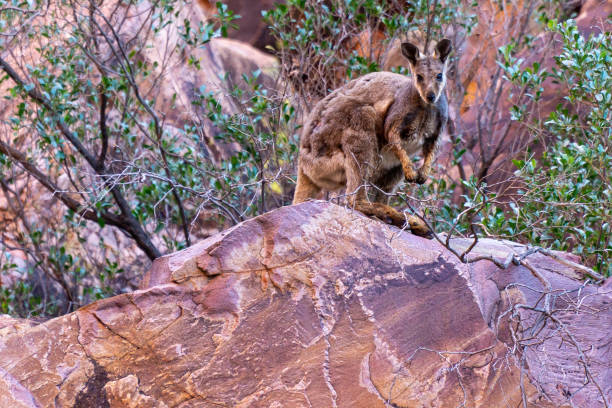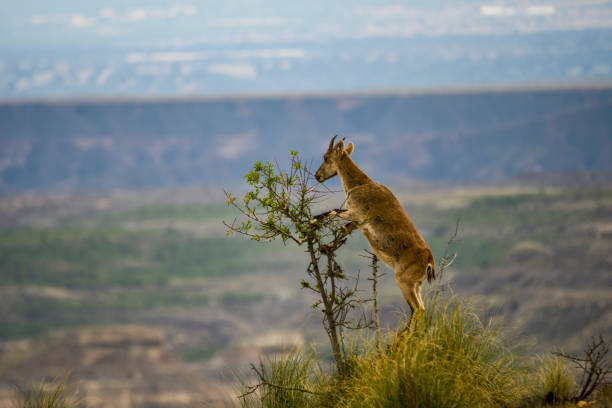
Discovering Uluru’s Wildlife: A Journey Through the Heart of Australia’s Desert Ecosystem
Amidst the red-hued horizons of Australia’s desert heart lies Uluru, an iconic natural wonder and a sacred site to the Anangu, the traditional landowners. This massive sandstone monolith, also known as Ayers Rock, rises dramatically from the flat surrounding bush and is not only a geological marvel but a biodiversity hotspot. Home to an array of animals uniquely adapted to its arid environment, Uluru is a living library of desert fauna. Many visitors embark on
Uluru tours from Alice Springs
not just to marvel at the rock’s immense beauty but also to catch a glimpse of the creatures that inhabit this rugged landscape. In this article, we reveal the main species that have adapted to survive under the harsh Australian sun, offering a glimpse into the thriving animal life that exists in and around Uluru.
Introduction to Uluru’s Unique Ecosystem

The majestic Uluru stands within the Uluru-Kata Tjuta National Park, a protected area that is rich with Australian desert fauna and flora. Recognized by UNESCO as a World Heritage Site, the park’s ecosystem is both delicate and resilient, mirroring the cultural significance it holds for the Aboriginal people. The animals that live here are not only important ecologically but are also an integral part of Aboriginal stories and traditions. The harsh climate of the region has led to some remarkable adaptations, with species evolving to cope with extreme temperatures and scarce water resources.
The Mammals of Uluru: From Marsupials to Bats

Despite the challenging environment, a variety of mammals call Uluru home. Their survival strategies are as diverse as their species. Nocturnal animals emerge under the cover of darkness to feed, while diurnal species seek shade and rest during the hottest parts of the day. Visitors often discover the clever hiding spots and signs of these desert dwellers.
- Red Kangaroo (Macropus rufus) – The most iconic of Australia’s marsupials, the Red Kangaroo is well adapted to the desert climate and can often be seen bounding across the open plains at dawn or dusk.
- Black-flanked Rock-wallaby (Petrogale lateralis) – Agile climbers, these wallabies are typically found among the rocky outcrops where they skillfully navigate the rugged terrain.
The Red Kangaroo, in particular, is a common sight for those embarking on
Uluru tours from Alice Springs
, as it is an animal well adapted to the aridity of the Outback. Black-flanked wallabies, on the other hand, are more elusive, but their presence is vital to the biodiversity of the area.
The Birds of the Red Centre
Avian life flourishes in Uluru, with many birds finding sanctuary amid the desert’s vast skies and rocky escarpments. For birdwatchers, the variety presents a unique opportunity to observe some of Australia’s most captivating feathered species in their natural habitat. Birds play a key role in the ecosystem, dispersing seeds and pollinating plants.
Highlighted Species:
- Budgerigar (Melopsittacus undulatus) – These small, brightly colored parakeets travel in flocks and add a splash of color to the red desert landscape.
- Wedge-tailed Eagle (Aquila audax) – With an impressive wingspan, these apex predators soar high above Uluru, scanning the ground below for their next meal.
Migratory patterns shift with the seasons, bringing in species that may not be present year-round, adding to the dynamic nature of Uluru’s bird populations.
Reptiles and Amphibians: Masters of Survival
In the heat of the desert, few animals are as well adapted as reptiles and amphibians. They are experts in conserving water and surviving in temperatures that would be lethal to other species. Among these are some of Uluru’s most fascinating and ancient residents.
Notable Reptiles:
| Species | Adaptation | Cultural Significance |
|---|---|---|
| Thorny Devil (Moloch horridus) | Can absorb water through its skin | Featured in Aboriginal stories and artworks |
| Perentie (Varanus giganteus) | Australia’s largest lizard can go long periods without water | Respected by local Aboriginal communities |
The Thorny Devil, with its spiky appearance and ability to absorb water, has become an emblem of the area’s unique wildlife, while the formidable Perentie is a true testament to the survival capabilities of reptiles in the Outback.
Uluru’s Insects and Arachnids: A Microscopic World
While mammals and birds may capture our attention, it is the teeming microscopic world of insects and arachnids that underpins the ecosystem at Uluru. These invertebrates form a critical part of the food chain, acting as pollinators, decomposers, and a food source for larger animals.
Interesting Examples:
- Honey Ant (Myrmecocystus spp.) – Known for their enlarged abdomens, these ants are a traditional bush tucker (food) for the Aboriginal people.
- Uluru Camel Spider (Selenopidae spp.) – Despite their name and intimidating appearance, these arachnids pose no threat to humans and play a role in controlling insect populations.
The presence of these tiny yet essential creatures offers a reminder of the complex interdependencies that sustain life even in the most challenging environments.
Flora of Uluru: Supporting a Web of Life
It is not just animals that are adept at surviving in Uluru’s harsh conditions. The plant life here, though sparse, plays a critical role in supporting the ecosystem. The flora provides shelter, food, and nesting sites for many animals, while also helping to stabilize the soil and retain water.
Key Plant Species:
- Bush Tomato (Solanum spp.) – A vital food source for many of Uluru’s animals and an essential ingredient in traditional Aboriginal diet.
- Desert Oak (Allocasuarina decaisneana) – Offers shade and shelter to a wide array of wildlife, while also being of cultural significance to the indigenous people.
The resilience of these plants is astounding, given the extreme temperature fluctuations and water scarcity they endure throughout the year.
Challenges Facing Uluru’s Fauna
While the animals of Uluru have thrived for thousands of years, they now face new threats due to human activities and global environmental changes. Pollution, habitat destruction, and the introduction of non-native species have all had detrimental effects. Climate change is causing more frequent and intense heatwaves and altering rainfall patterns, which can have cascading effects throughout the ecosystem.
Conservation efforts must be enacted to preserve this unique environment. Measures such as habitat restoration, feral animal control, and research into the impacts of climate change are essential for the protection of Uluru’s wildlife. Active management strategies that incorporate traditional Aboriginal knowledge are also fundamental to these efforts.
Conclusion: The Harmony of Life at Uluru
Uluru’s wildlife is as spectacular as the monolith itself, showcasing nature’s ability to adapt to even the most inhospitable environments. This rich tapestry of life, woven tightly into the fabric of the cultural landscape, highlights the importance of conservation. As we better understand these desert inhabitants and their ecological roles, we must ensure that they, along with the rock they call home, are preserved for future generations to learn from and enjoy. Sustainable tourism, guided by a deep respect for cultural practices and the natural world, is key to maintaining this delicate balance.
FAQs: Unveiling the Mysteries of Uluru’s Wildlife
Q1: What is the most common animal to see in the Uluru area?
A1: The most commonly sighted animals are typically the Red Kangaroo, the Black-flanked Rock-wallaby, and various bird species such as the Budgerigar and the Wedge-tailed Eagle, especially for those on
Uluru tours from Alice Springs
.
Q2: Are there any dangerous animals in Uluru?
A2: Uluru is home to some venomous species like snakes and spiders. However, they rarely present a threat to well-prepared and cautious tourists.
Q3: Can we interact with the animals in Uluru?
A3: Visitors should always observe wildlife from a safe distance to protect both themselves and the animals. It’s essential to avoid disturbing their natural behavior and habitat.
Q4: How has climate change affected the animals in Uluru?
A4: The primary impacts of climate change on Uluru’s wildlife are increasingly extreme temperatures and changing rainfall patterns. These environmental shifts can result in altered habitats, food scarcity, and stress on the animal populations.
Q5: What role does Aboriginal culture play in the conservation of Uluru’s animals?
A5: Aboriginal people have a profound spiritual and cultural connection to their land and its creatures. Their traditional knowledge is invaluable in managing the land sustainably and is being increasingly incorporated into conservation strategies to protect and honor the biodiversity of Uluru.

